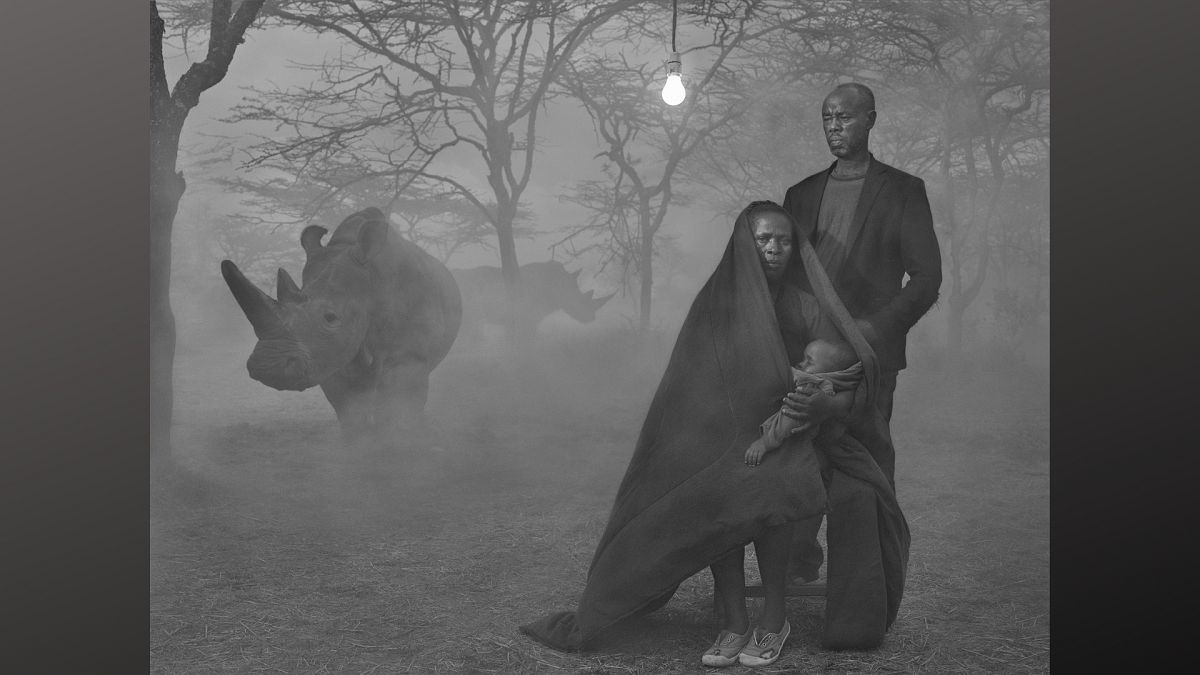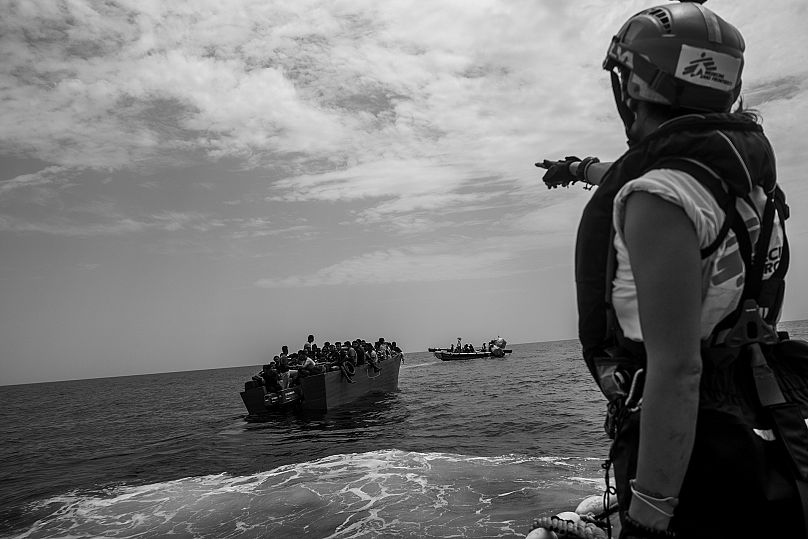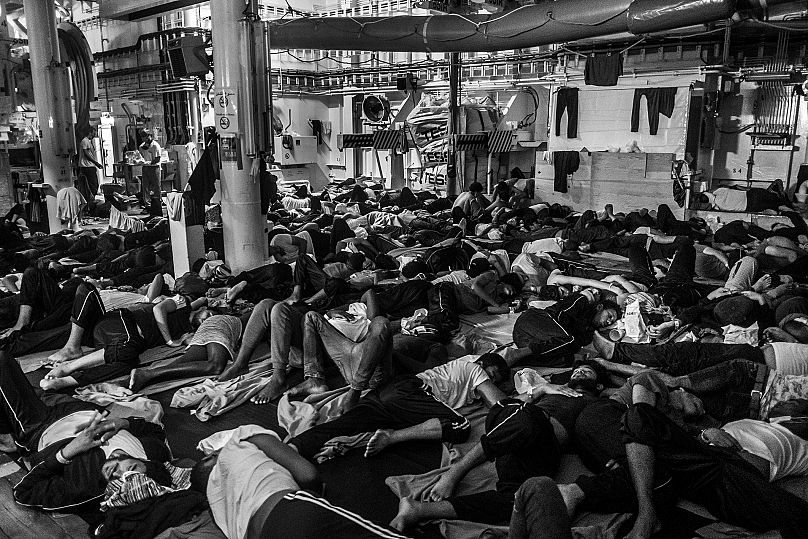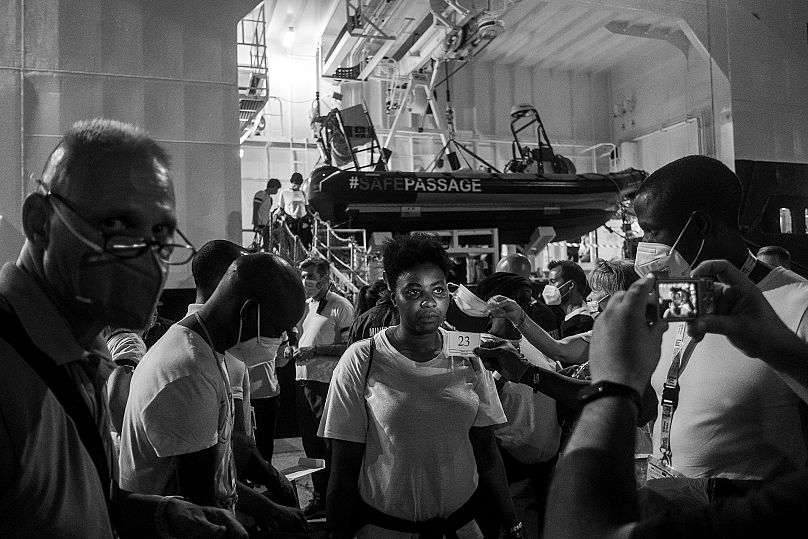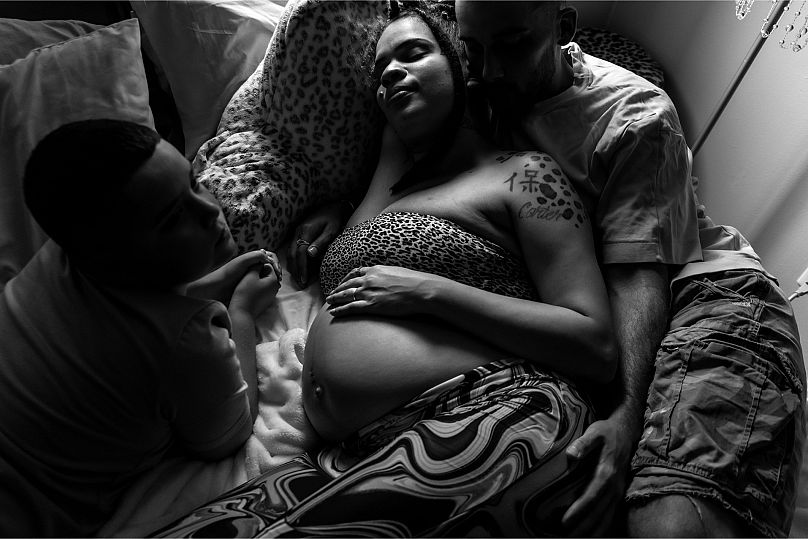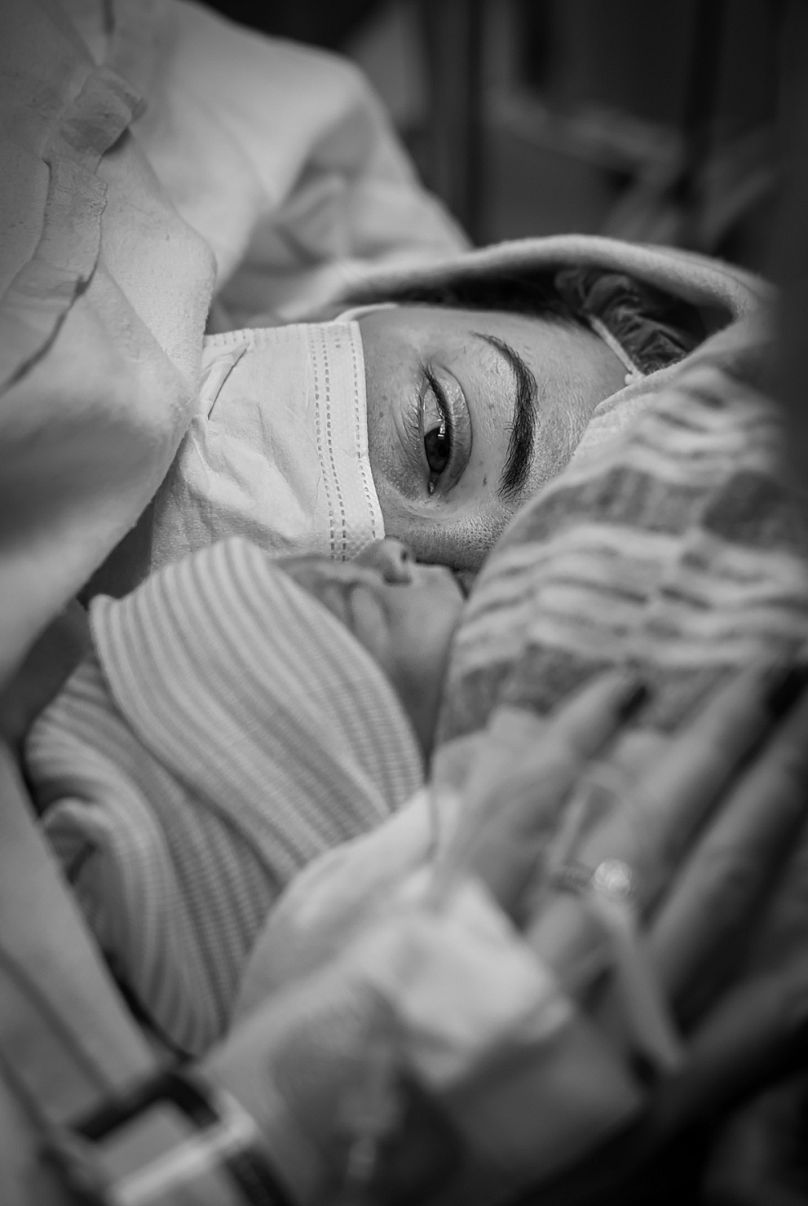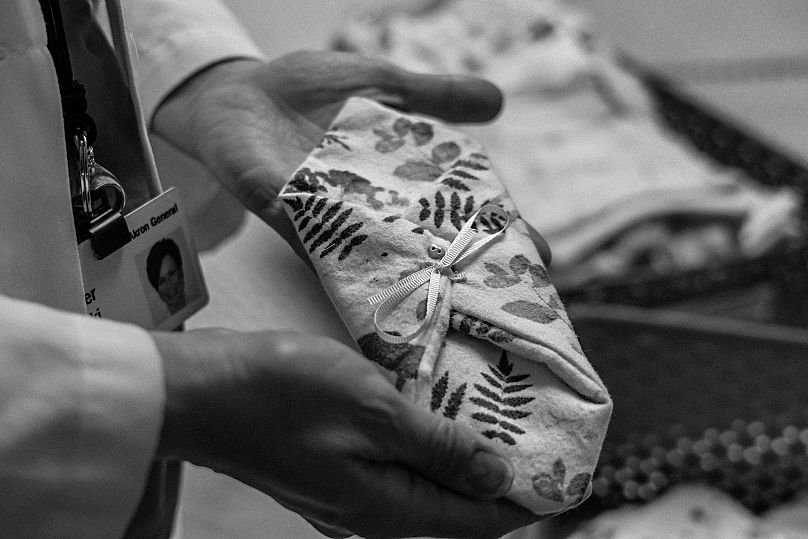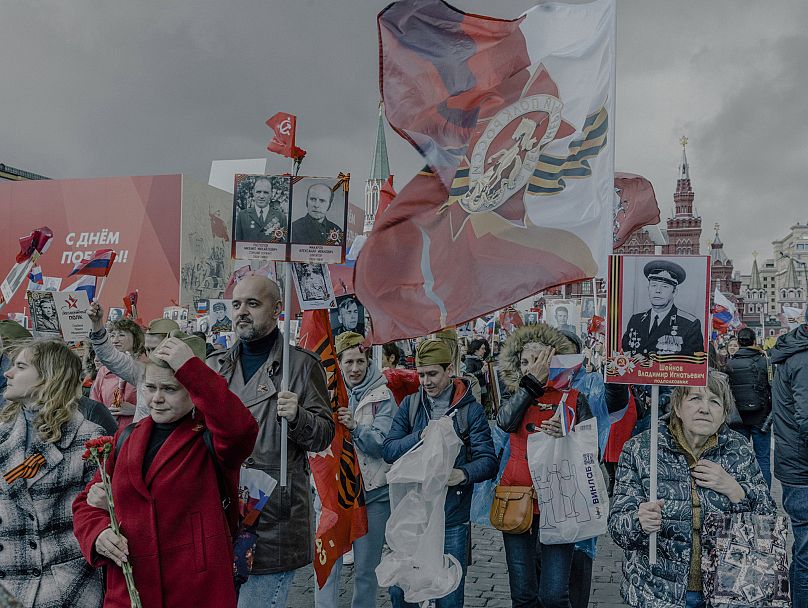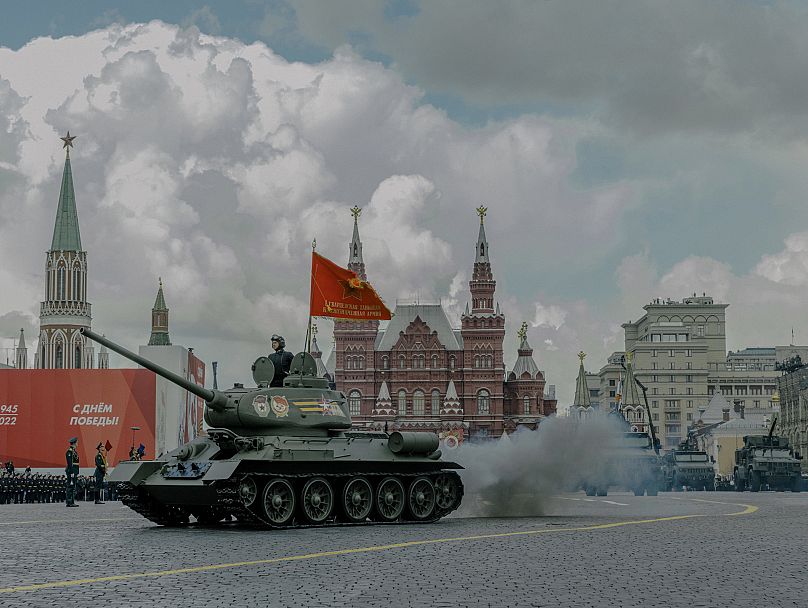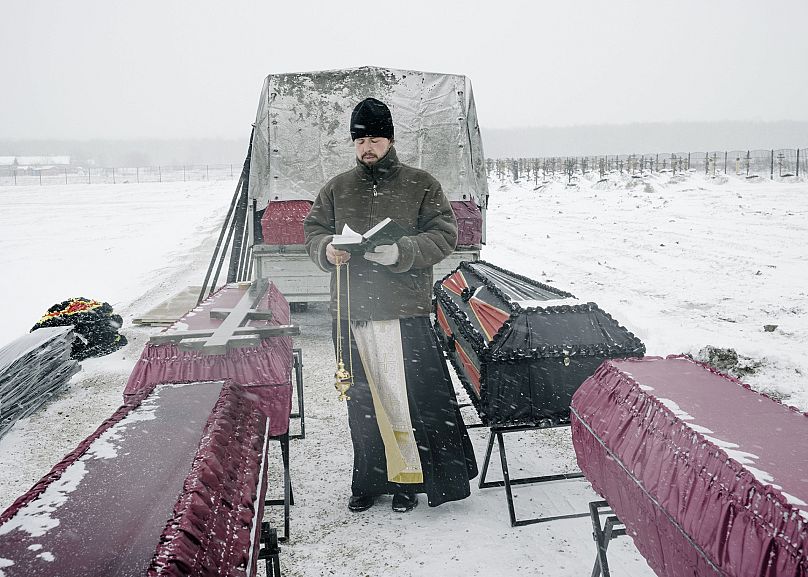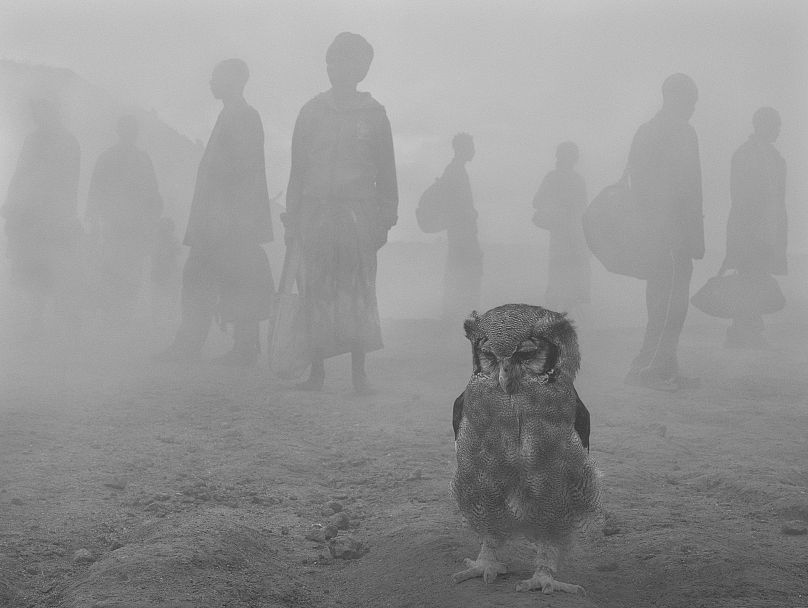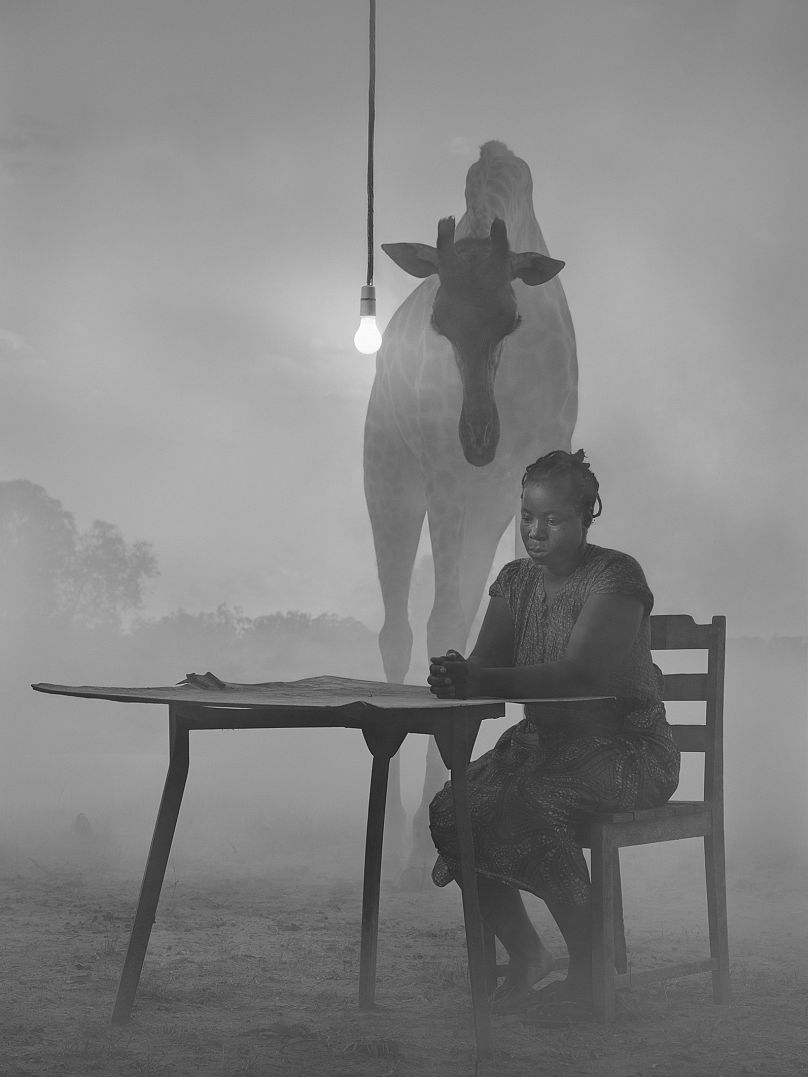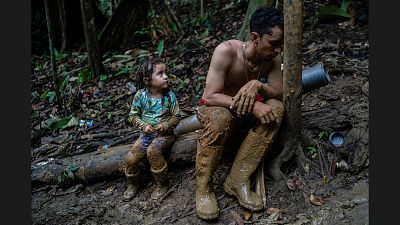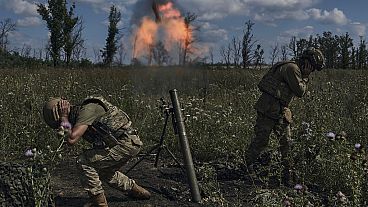From climate change to migration to women's rights, these exhibitions at the Visa Pour L'Image photojournalism festival will make you see the world differently.
Visa Pour L'Image is underway in the southern French city of Perpignan, showcasing 24 of the best photo reportages of the year.
For this 35th edition of the world's top photojournalism festival, people have been coming from near and far to see the exhibitions on display across the city. The in-depth reports help humanise major issues facing the globe today - from climate change to war to women's rights to migration.
Each visitor we spoke with came away with a different feeling and message.
"My favourite was the report on elephants (Brent Stirton, "Asian Elephants: Culture, Conservation, Conflicts & Coexistence") because they're my spirit animals," said 22-year-old Julie from Perpignan. "But also the one on abortion (Stephanie Sinclair, "What a High-Risk Pregnancy Looks Like After Dobbs") because it's an issue that affects women."
"I liked the report on coal (Pascal Maitre, "Charcoal, Poor Man's Black Gold") because it was shocking and makes me see reality in a different way," said 16-year-old Nathan from Italy.
At Euronews Culture, we've put together a list of four exhibitions at Visa Pour L'Image this year that made us think differently about the world.
Michael Bunel, "Search, Rescue, Protect"
French photojournalist Michael Bunel has been covering migration in and around Europe for over 10 years, reporting from Syria through Turkey and the Balkans and now from the Mediterranean Sea. His most recent photo project focuses on rescue workers in the Mediterranean, who he portrayed over the course of four separate missions at sea with Doctors Without Borders (MSF) and SOS Méditerranée.
"I really tried to show the humans behind the story, the people taking action," Bunel told Euronews Culture. "They prepare for days, they forge friendships. There's humanity on board these ships, and we never get to see that. We see people who are saving other people and that's it. And until the next tragedy strikes, we stop talking about it."
The Central Mediterranean has been described by the United Nations refugee agency as the most dangerous migration route in the world - one in six people who depart from North Africa on small boats, seeking refuge or better economic opportunities in Europe, die on their journeys. But as the death toll continues to climb, public interest in the story has cooled.
"I never sold this report," Bunel said. "Editors would tell me, great work but readers already know the story, or we've covered it already."
Bunel received a grant to complete this project from the Bibliothèque nationale de France (BNF). He says he's driven to continue this work by a profound sense of "disgust" with the situation and a need to bear witness.
"I always tell young people that we have little direct impact with our photography on these kinds of events," he said. "You need to think, with this kind of topic, that it's also about creating a body of evidence showing the action or inaction of certain people at a given moment in time. That way future generations can look back and cast judgment."
Stephanie Sinclair, "What a High-Risk Pregnancy Looks Like After Dobbs"
Award-winning US photographer Stephanie Sinclair was asked by The New York Times Magazine to document the loss of women's reproductive rights in the United States - after the Supreme Court ruled that access to abortion would be decided by individual states.
In August 2022, Sinclair was granted access to photograph doctors and patients at the Cleveland Clinic’s maternal-foetal medicine department, one of the largest and most respected specialist centres in the country. Ohio is one of the states that banned abortion in the aftermath of the Dobbs v. Jackson Women's Health Organization decision, but that ban has since been blocked by a judge.
"It felt like a privilege to be in the room," Sinclair told Euronews Culture. "It felt like I was entrusted to do the story with respect for the difficult decisions (these women) were in the process of making. So that's what I was overcome with, just the responsibility of doing a good job."
Her intimate series of photographs gets up-close and personal with women who are facing painstaking decisions: Catrina Rainey, pregnant with twins, chose to terminate one of her foetuses after learning it had a severe brain defect and was unlikely to live beyond six months, and could also threaten the viability of her other foetus. Megan Keeton decided to continue with her pregnancy, despite doctors recommending she terminate it due to complications with two previous pregnancies.
All of these women believed the choice should be left to the pregnant person.
"What I took away from being on this project for a couple weeks is that there are still a lot of people in the fight," Sinclair said. "All these women in this project are part of the fight, they all shared their stories because they believed that women should have reproductive rights and access to abortion. (...) I feel it's an obligation to continue to be part of that conversation and push for the rights of the generations that are coming after us."
Sinclair, who is also the founder of the nonprofit against child marriage Too Young To Wed, said that despite the depressing situation in her home country, she still believes the future is bright.
"I'm optimistic that the ship will right itself," she said. "It's just having a bit of a setback during this last gasp for power, as the demographics change in the United States. But I don't think these younger generations are going to put up with it."
"I hope that what people see in my photographs is not really bad news, but resilience, determination, bravery. Because that's what I saw in those women."
Nanna Heitmann, "War is Peace"
German-Russian photographer Nanna Heitmann was based in Moscow when Russian President Vladimir Putin announced a full-scale invasion of Ukraine in February 2022. Over the next months, Heitmann documented the war from the Russian point of view, attempting to illustrate how the government's iron grip on information within its borders had deeply warped citizens' sense of reality.
"It's very impressive how strong propaganda is," Heitmann told Euronews Culture. "We live in this time of information war and Putin has been building up this propaganda for the past 20 years. It's very aggressive and very effective. What's always struck me most is how much people are able to live in a different reality. I think it's shocking how you can manipulate people in the most different ways."
Heitmann's series takes a sweeping look across Russia from the start of the war - with the first protests against what Putin was calling a "Special Military Operation" - to the muted daily reminders that the fighting is ongoing. She photographed impoverished families who had lost sons fighting in Ukraine, lavish events carrying on as usual in Moscow and school plays hammering home messages of patriotism and duty.
"There are so many different realities in Russia right now," she said. "You have this Potemkin paradise in Moscow where it's like, festive and the war feels far away because it's kept away from the capital. And then you go to the regions, you go to Dagestan, where almost everyone has somebody fighting or lost someone fighting in Ukraine. I hope one day it's going to be a historic document so people can look back and see how life was inside Russia at the time with this dictatorship."
Nick Brandt, "The Day May Break"
English photographer Nick Brandt's ongoing series "The Day May Break" features otherworldly snapshots - a woman poses on a chair as a jaguar walks behind her, a man sits on a wooden crate as a rhinoceros pauses within arm's reach, an owl looks downtrodden as shadowy figures walk in the background. In each of the shots, an ominous fog obscures the world around the subjects.
The photo project aims to shine a light on the people and animals that have been irreversibly affected by climate change, from extreme drought to flood.
The animals are almost all long-term rescues, victims of everything from habitat destruction to poaching, and can never be released back into the wild. As a result, they were used to humans being around, making it safe for the subjects to pose in close proximity.
The fog - created by fog machines on location at several sanctuaries and conservation areas in Africa and South America - symbolises a natural world that's rapidly fading from view. It also recalls the smoke from wildfires, intensified by climate change, devastating so much of the planet.
Brandt's stunning series stands at the intersection of documentary and art, presenting a stark warning of what's to come if humans don't make serious efforts to stop global warming and destruction of the environment.
There are many more photo exhibitions to discover at Visa Pour L'Image, which runs through to 17 September in Perpignan. You can also check out the exhibitions virtually on the festival's website.
